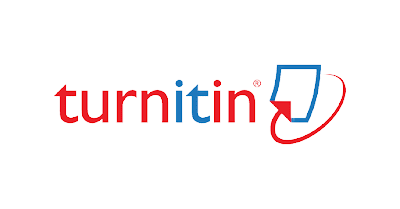ANALYSIS OF ELEMENTARY SCHOOL STUDENTS' CRITICAL THINKING SKILLS IN THE SUBJECTS OF NATURAL SCIENCE AND SOCIAL STUDIES
Abstract
The ability to think critically is a skill that students need to cope with the challenges of today's world. The aim of this study is to analyze the critical thinking skills of fourth-grade students in science materials at SD Islam Ummina and SDN 1 Tunjungan for the 2022/2023 academic year. This research employs a quantitative descriptive method, with data collected by providing High Order Thinking Skills (HOTS) questions with critical thinking indicators related to science material to 52 students of grade IV SD. The results of the PAP analysis on the final test showed that 7 students (13%) had high critical thinking skills, 5 students (10%) had good critical thinking skills, 18 students (35%) had sufficient critical thinking skills, and 22 students (42%) had low critical thinking skills. Furthermore, in the distribution of student answers, the minimum score was 110 with a percentage of 21% for question number 7, which utilized type C5 questions with complex multiple-choice formats. Thus, the students' ability to solve questions at levels C4, C5, and C6 is still low. Based on these results, it can be concluded that the critical thinking skills of fourth-grade students at SD Islam Ummina and SDN 1 Tunjungan are still low.
Downloads
References
Acesta, A. (2020). Analisis Kemampuan Higher Order Thingking Skills (HOTS) Siswa Materi IPA Di Sekolah Dasar. Quagga: Jurnal Pendidikan dan Biologi, 12(2), 170. https://doi.org/10.25134/quagga.v12i2.2831
Keputusan KEMDIKBUDRISTEK No. 8/H/KR/2022 Tentang Capaian Pembelajaran, (2022). files/420/16_CP_2022_IPAS.pdf
Ananda, S. F. D., & Fauziah, A. N. M. (2022). Penerapan Model Pembelajaran Problem Based Learning Untuk Meningkatkan Kemampuan Berpikir Kritis Siswa. EDUSAINTEK: Jurnal Pendidikan, Sains Dan Teknologi, 9(2), 390–403. https://doi.org/10.47668/edusaintek.v9i2.491
Darmawati, N. Pt. A., Tegeh, I. Md., & Suarni, N. Kt. (2013). Pengaruh Model Pembelajaran Children Learning In Science Berbantuan Metode Talking Stick Terhadap Sikap Ilmiah Dan Penguasaan Konsep Ipa Kelas V. 1(1). https://doi.org/https://doi.org/10.23887/jjpgsd.v1i1.789
Dewi, S. Z., & Ibrahim, H. T. (n.d.). Pentingnya Pemahaman Konsep Untuk Mengatasi Miskonsepsi Dalam Materi Belajar IPA di Sekolah Dasar. 13(01). files/527/Dewi and Ibrahim - Pentingnya Pemahaman Konsep Untuk Mengatasi Miskon.pdf
Fauzi, A. M., & Abidin, Z. (2019). Analisis Keterampilan Berpikir Kritis Tipe Kepribadian Thinking-Feeling Dalam Menyelesaikan Soal PISA. Suska Journal of Mathematics Education, 5(1), 1. https://doi.org/10.24014/sjme.v5i1.6769
Fitriani*, W., Suwarjo, S., & Wangid, M. N. (2021). Berpikir Kritis dan Komputasi: Analisis Kebutuhan Media Pembelajaran di Sekolah Dasar. Jurnal Pendidikan Sains Indonesia, 9(2), 234–242. https://doi.org/10.24815/jpsi.v9i2.19040
Murti, Wiyanto, & Hartono. (2018). Studi Komparasi antara Tes Teslet dan Uraian dalam Mengukur Hasil belajar Kognitif Siswa kelas XI SMA Negeri 1 Gombong. Unnes Physics Education Journal, 7(1). https://doi.org/https://doi.org/10.15294/upej.v7i1.22469
Puspitasari, E., Y Saputri, dan D., & Laweyann, K. (n.d.). Kemampuan berpikir kritis siswa dalam menyelesaikan soal higher order thinking skills pada kelas v materi ipa.
Rahmi, Y. L., & Alberida, H. (2017). Improving Students’ Higher Order Thinking Skills through Portfolio Assessment on Biology Curriculum and Textbook Analysis Course. Bioeducation Journal, 1(1), 22–33. https://doi.org/10.24036/bioedu.v1i1.21
Sammel, A. (2014). The Pedagogical Implications of Implementing New Technologies to Enhance Student Engagement and Learning Outcomes. 5(2), 104–113. https://doi.org/http://dx.doi.org/10.4236/ce.2014.52017
Sani, M. M. R., Meha, A. M., & Nenotek, S. A. (2020). Penerapan Model Siklus Belajar 5E Untuk Meningkatkan Kemampuan Berpikir Tingkat Tinggi (HOTS) Siswa di SMP Adhyaksa 2 Kupang Tahun Ajaran 2018/2019. Jurnal Sains dan Edukasi Sains, 3(1), 15–23. https://doi.org/10.24246/juses.v3i1p15-23
Saraswati, P. M. S., & Agustika, G. N. S. (2020). Kemampuan Berpikir Tingkat Tinggi Dalam Menyelesaikan Soal HOTS Mata Pelajaran Matematika. Jurnal Ilmiah Sekolah Dasar, 4(2), 257. https://doi.org/10.23887/jisd.v4i2.25336
Soraya, D., Jampel, I. N., & Diputra, K. S. (2019). Pengaruh Model Pembelajaran Problem Based Learning (PBL) Berbasis Kearifan Lokal Terhadap Sikap Sosial Dan Berfikir Kritis Pada Mata Pelajaran Matematika. Thinking Skills and Creativity Journal, 1(2), 76. https://doi.org/10.23887/tscj.v1i2.20409
Suhendro, S., Sugandi, D., & Ruhimat, M. (2021). Analysis on Factors Influencing Geography Teachers’ Ability in Constructing High-Order Thinking Skills (HOTS) Assessment Instrument. Geosfera Indonesia, 6(2), 205. https://doi.org/10.19184/geosi.v6i2.21428
Wahyuningtyas, R. S., & Simanjuntak, F. N. (2020). Pengembangan modul pembelajaran berbasis kearifan lokal untuk meningkatkan kemampuan berpikir kritis. 7, 13.
Wijaya, E. Y., Sudjimat, D. A., & Nyoto, A. (2016). Transformasi Pendidikan Abad 21 Sebagai Tuntutan Pengembangan Sumber Daya Manusia Di Era Global. 1, 16.
Yanitsky, O. (2017). A Challenge For The Humanities. 4(12), 131–140. https://doi.org/10.14738/assrj.412.3370.
Yuliati, S. R., & Lestari, I. (2018). Higher-Order Thinking Skills (Hots) Analysis Of Students In Solving Hots Question In Higher Education. Perspektif Ilmu Pendidikan, 32(2), 181–188. https://doi.org/10.21009/PIP.322.10
Copyright (c) 2023 Aini Shofiyana Dewi, Ani Rusilowati, Woro Sumarni, Abdul Mufid, Koteit Naim

This work is licensed under a Creative Commons Attribution-ShareAlike 4.0 International License.
Jurnal allows anyone to compose, correct, and do derivative works, even for commercial purposes, as long as they credit for the original work. This license is the freest. It is recommended for maximum distribution and use of licensed material.
The submitted paper is assumed not to contain any proprietary materials that are not protected by patent rights or patent applications; The responsibility for technical content and protection of proprietary materials rests with the authors and their organizations and not the responsibility of journal or its editorial staff. The primary (first/appropriate) author is responsible for ensuring that the article has been viewed and approved by all other authors. The author's responsibility is to obtain all necessary copyright waivers to use any copyrighted material in the manuscript before submission.
Jurnal Pendidikan, Sains dan Teknologi allows the author(s) to hold the copyright without restrictions and allow the author(s) to retain publishing rights without restrictions. Jurnal Pendidikan, Sains dan Teknologi CC-BY-SA or an equivalent license as the optimal license for the publication, distribution, use, and reuse of scholarly work. Jurnal Pendidikan, Sains dan Teknologi allows the author(s) to hold the copyright without restrictions and allow the author(s) to retain publishing rights without restrictions. Jurnal Pendidikan, Sains dan Teknologi CC-BY-SA or an equivalent license as the optimal license for the publication, distribution, use, and reuse of scholarly work.
In developing strategy and setting priorities Jurnal Pendidikan, Sains dan Teknologi recognize that free access is better than priced access, libre access is better than free access, and libre under CC-BY-SA or the equivalent is better than libre under more restrictive open licenses. We should achieve what we can when we can. We should not delay achieving free in order to achieve libre, and we should not stop with free when we can achieve libre.
Jurnal Pendidikan, Sains dan Teknologi is licensed under a Creative Commons Attribution-ShareAlike 4.0 International License.
You are free to:
- Share a copy and redistribute the material in any medium or format
- Adapt a remix, transform, and build upon the material for any purpose, even commercially.
- The licensor cannot revoke these freedoms as long as you follow the license terms.






